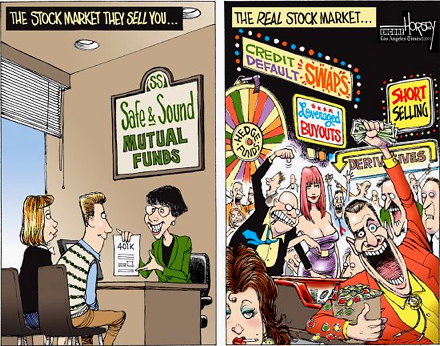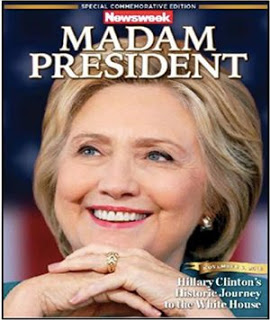

| Online: | |
| Visits: | |
| Stories: |

| Story Views | |
| Now: | |
| Last Hour: | |
| Last 24 Hours: | |
| Total: | |
“What Are the Odds On An 80% Stock Market Correction?
Tuesday, February 28, 2017 13:54
% of readers think this story is Fact. Add your two cents.
“What Are the Odds On An 80% Stock Market Correction?
by Vern Gowdie
“Another night, another high for the Dow Jones. Are you excited, nervous or mystified by the US stock market’s seemingly relentless march higher? If you take the investor and adviser sentiment polls at face value, it’s ‘game on’. Bullish sentiment is reaching record levels.
Institutional money-managers are holding the least amount of cash in their portfolios…it’s ‘all in’. The Volatility Index (VIX) is showing the heart rate of traders is far from elevated. It’s flat-lining around the same level it was in early 2007. Ah, nothing like a little complacency to steady the nerves, is there? Bets are being taken on how soon the world’s most famous index will hit 30,000 points.
History (and a certain oracle from Omaha- Warren Buffett) tells us we should be fearful when others are greedy. But in the minds of market participants, there’s really been nothing to fear since Greenspan made this statement in response to the crash of 1987: ‘The Federal Reserve, consistent with its responsibilities as the Nation’s central bank, affirmed today its readiness to serve as a source of liquidity to support the economic and financial system.’
Everyone knows the Fed has the market’s back with its quantitative easing and zero interest rate policy. Why worry? Join the party. But is the Fed as omnipotent as people think? Or are they just a gaggle of clueless PhD serial bubble-blowers who masquerade as serious, know-it-all banker types?
My money- secure in a dull, boring, unexciting, low-interest bank account- is on the latter. That’s my bet. The considered wisdom is: Don’t bet against the Fed.
Not all bets are certainties: Hillary Clinton was such a sure bet for the White House, Newsweek didn’t even wait for the official results before going to print. It was, as they say, a ‘fait accompli’.
Brexit. It was not going to happen. The Brits will never vote to leave the EU. Wanna bet on it?
What about that 2017 Super Bowl result? The New England Patriots were down for the count going into the fourth quarter…behind 28 to nine on the scoreboard. No team in modern NFL history has ever come back from a 19-point deficit going into the fourth quarter. What were the odds on the Patriots winning? But win, they did, tying up the game at full time and scoring the winning points in extra time. Who’da thunk that at the start of the fourth quarter?
Leicester City were rank outsiders to win the 2015–16 English Premier League. The team was so far off the bookies radar they started the season at the less-than-flattering odds of 5,000–1. Guess what? They won. Beating high-profile teams like Manchester United and Arsenal for the coveted trophy.
What are the odds of winning Lotto? Millions to one. Yet, every week, someone becomes an instant millionaire. Long odds mean that, on the balance of probabilities, it’s unlikely to happen…but it can, and sometimes does, happen.
Since 1987 we’ve seen three substantial market corrections (1987, 2000–2002 and 2008–09)- give or take. Each downturn resulted in roughly a 50% correction across the major indices. However, the tech-heavy NASDAQ index took a hit of nearly 80% after the dotcom bubble burst.
Judging by the latest VIX reading, the odds on a ‘garden variety’ correction of 50% are pretty low. Therefore, a correction of 80% is up there with Leicester City winning the title. No one is expecting it. Which is precisely why you should be worried. Mr Market loves it when everyone is looking the other way. That’s when the surprise is at its greatest. An 80% correction is the market’s Hannibal Lecter moment…a nice Chianti to go with his liver and fava beans.
Danielle DiMartino Booth- former Wall Street trader, financial columnist and adviser to the Governor of Federal Reserve Bank of Dallas for nine years- has written an excellent book, titled: “Fed Up- An Insider’s Take on Why the Federal Reserve Is Bad for America.” By way of background, in 2006, her Dallas Morning News financial column regularly warned readers of the impending disaster in subprime lending. She’s one smart lady.
Here’s an extract from page 50 of ‘Fed Up’ (emphasis mine): ‘At the top of the [Fed] pyramid now sits Janet Yellen. Under her leadership, the Fed has struggled to extricate itself and the American economy from years of policy blunders that have positioned our economy on the precipice of another financial crisis that could dwarf that of 2008.’
Got that? Dwarf 2008! This is a former Fed insider. Not some shock-jock newsletter writer looking for a headline. She was there when Janet Yellen said in January 2007: ‘While the decline in housing activity has been significant and will probably continue for a while longer, I think the concerns we used to hear about the possibility of a devastating collapse- one that might be big enough to cause a recession in the U.S economy- have been largely allayed.’ And when Bernanke proclaimed to Congress in March 2007: ‘…problems in the subprime market seem likely to be contained.’
She has seen these bozos up close and personal. They are theorists. Academics that have never been in a real job…straight from university to the cloistered, secretive and unaccountable world of central banking. They’re completely removed from the impact of the decisions they make- guaranteed pensions for life, heavily-subsidized in-house cafeterias and dining rooms. They socialize with other pontificating PhD dreamers and schemers. These are the people market participants are trusting to have their back. I wouldn’t bet on it.
How could the next financial crisis dwarf 2008? Follow the maths.
Stock prices (I’m careful not to say values, because there is no value at this stage) are a function of earnings multiplied by a PE (price/earnings) ratio. Simple.
A company earning $1 billion X a PE of 15 = $15 billion.
If there are 15 billion shares on offer, each share is worth $1.
Not rocket science.
At present, the cyclically-adjusted PE (CAPE) is around 28x.
In 1982, at the start of the greatest bull market — and not so coincidentally, greatest credit expansion in history — the CAPE was 7x.
A fourfold expansion in the multiple applied to earnings.
Physics tells us that expansion is followed by contraction.
A company earning $1 billion on today’s CAPE of 28x = $28 billion.
Should the CAPE contract to its 1982 level of 7x, the company would be worth $7 billion…a 75% reduction in value, even though the company is still producing the same earnings.
But what happens if the market correction also causes a contraction in economic activity and earnings fall by 20%, to $800 million?
Earnings of $800 million multiplied by a CAPE of 7 = $5.6 billion…an 80% fall from $28 billion.
If PEs and earnings can rise, then logic says they can also fall. Nothing in markets is ever linear.
A CAPE of 7x (or less), while not common, is not without precedent — 1921, 1933 and 1982.
Earnings falling by 20% are also not an everyday event. But in times of financial upheaval, consumers tend to retreat…so it can happen. When you work through the numbers, it is possible to construct a feasible scenario where an outlier event can occur. The market bookies are completely discounting the prospect of a fall of this magnitude and, for that matter, of the market correcting at all, which is why the odds of a substantial correction are not as long as you think.
And remember, long-shots do win.
Think of Wall Street as the world’s biggest casino…which it is. If you adopt this mindset, the only chips you should have on the table are the ones you are prepared to lose heavily on. If you cannot afford to suffer a significant loss of capital, cash in your winnings and wait for the odds to improve in your favour. When is that? When no one can afford to go to the casino because they have no money left to play with.”
“Be afraid. Be very afraid…”
Source: http://coyoteprime-runningcauseicantfly.blogspot.com/2017/02/what-are-odds-on-80-stock-market.html




